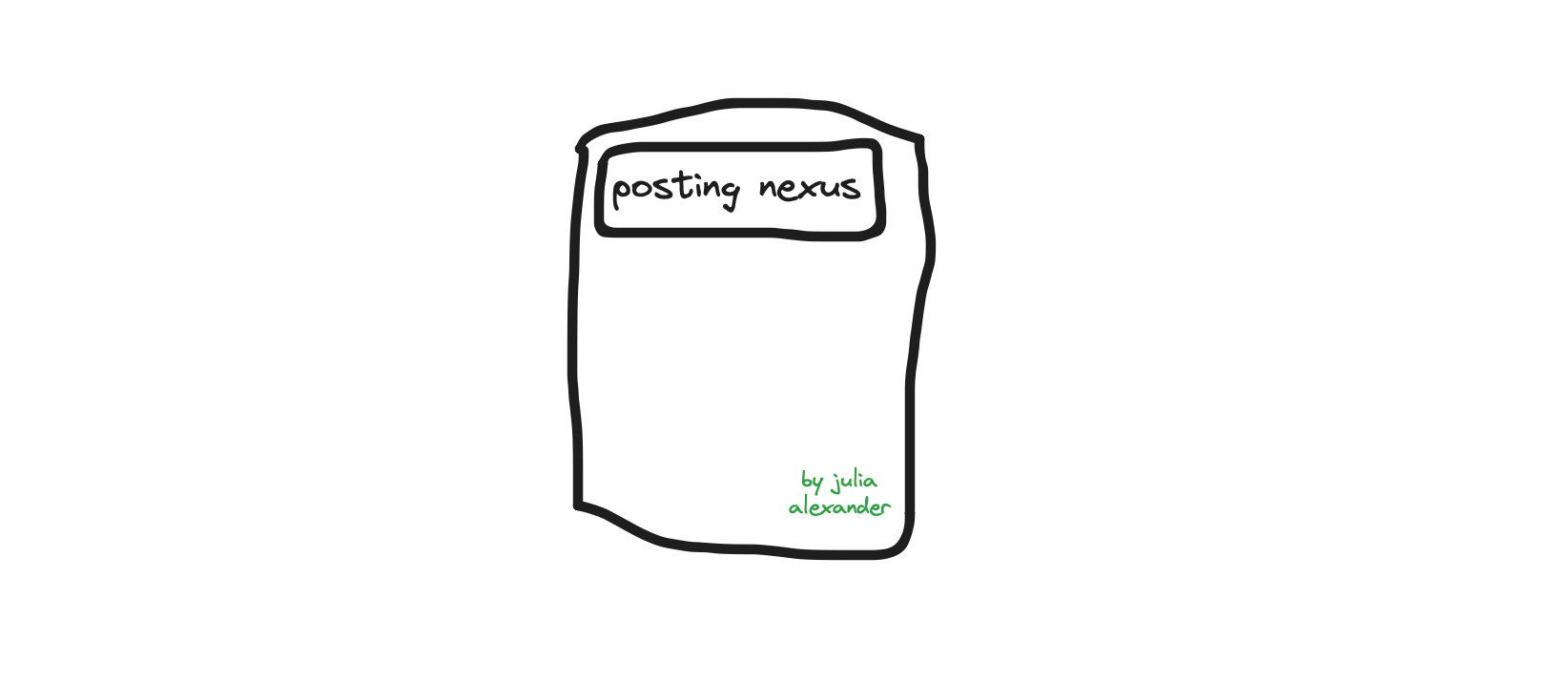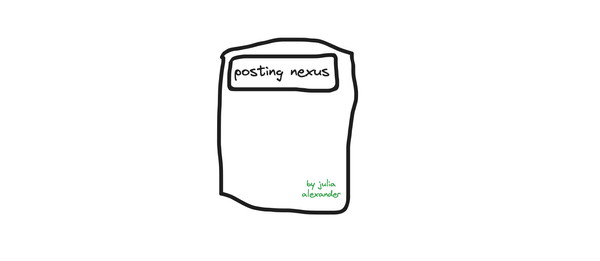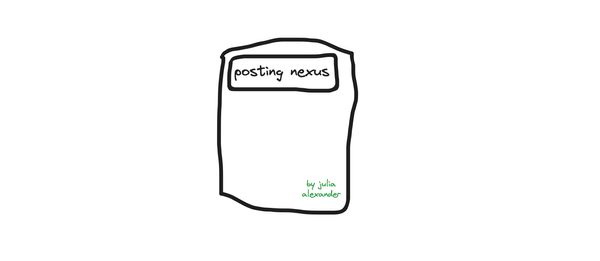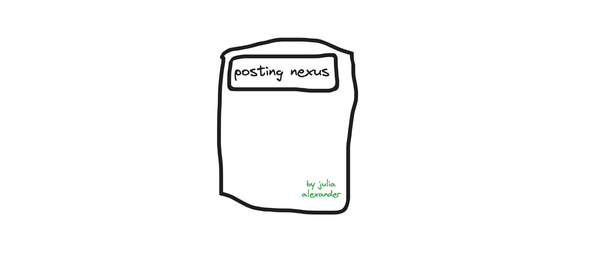The Internet's Countertransference Problem
There are too many platforms to keep up with, and trying to determine which ones are most important leaves us juggling networking problems and identity crises. How do we fix the insatiable need to be seen by the right group?

If I were to ask you to name the crowd that matters most to your own day-to-day life, who would you point to and how would you do it? You likely already have an image in your head. The ambitious go-getting hustlers are thinking about their LinkedIn connections and their bosses in the boardroom. The ultimate fan is thinking about Tumblr or X. The aspiring influencer is already conjuring up ideas of their favorite brands to partner with on Instagram, while the diligent creator is picturing the inevitable collaboration on YouTube. Mark Zuckerberg famously once said “You have one identity…the days of you having a different image for your work friends or co-workers and for the other people you know are probably coming to an end pretty quickly.”
All due respect to Mr. Zuckerberg (disclaimer: my fiancee works at Meta), who said that in 2010 when Instagram was on the horizon and WhatsApp wasn’t a concern in Zuck’s head, but I think that’s too simplified. We are all digital shapeshifters. But as boundaries of where we post expand beyond our intention, and as our social networks shift to entirely new formats with entirely new phylogenetic systems, keeping up with who we need to be dependent on where we are becomes a much more tangled affair.
It used to be that we navigated different identities for different professional and private reasons. Research from the University of Bath found that people were more likely to use a fun avatar on Tinder than they were on LinkedIn because of the perceived difference in personal versus professional audience attraction. That’s no different from wearing a suit to a job interview and a ratty ol’ tee to a bar with friends. What has changed, however, is those two identities not quite blending together but being forced to combine. That same University of Bath report found that “social media platforms are dynamic and ever-changing, whereby users will continue to shape-shift their self-presentation according to how they wish to use various platforms, which may include shifting away from a particular platform altogether.”
We don’t truly shift away from a platform, though; we stray but keep one toe in the space we felt most comfortable in. Posting within these preferred worlds creates two simultaneous realities, and two simultaneous problems: cultural countertransference and second lives. Cultural countertransference is something most of us have experienced. A post that is intended for one audience on one platform that is dictated by silently understood etiquette and a uniformed sense of humor doesn’t translate well to another platform. The type of post that may kill on X isn’t going to work well on BlueSky, while a viral TikTok video that takes advantage of that understood audience fails on Snapchat. What happens, however, when one preferred space starts to transform, to crumble, to die off? When everyone you’re orienting yourself around starts to split off and form new factions in new spaces, how do you bridge that anxiety-fueled moment from present reality to future community?
As boundaries of where we post expand beyond our intention, and as our social networks shift to entirely new formats with entirely new phylogenetic systems, keeping up with who we need to be dependent on where we are becomes a much more tangled affair.
This is the second life opportunity and issue. Not to be conflated with approaching different platforms in specific ways (for example, my Instagram account is nothing but tomfoolery with friends and regular updates about the New Orleans Saints that no one cares about; my X account is rarely used anymore but is mainly to offer some kind of insight or input on topics that touch my work), the second lives phenomenon is an attempt to bridge a preferred platform or crowd where recognition is sought with a new one. Deciding to go from being a top fandom operator on Tumblr to Instagram because the fear of Tumblr’s audience drying up or the network effect of seeing friends move to other platforms creates the feeling of a second life. Inevitably what happens is taking on or performing a new personality trait that resulted in attention previously.
How Do You Post?
It’s not just changing what you post, but how you post. Take famed controversial financier Bill Ackman. As the Wall Street Journal reported in a profile on Ackman, “When Ackman joined Twitter in 2017, his tweeting appeared like that of most public figures and companies—a forced exercise to further business interests.” Twitter existed as a platform he didn’t care about, instead preferring other forums of public and private validation. By the time that Ackman started tweeting more relentlessly, gaining the attention of figures like Elon Musk, David Sacks, and Lex Fridman, his personality on the platform changed to accommodate the attention he was receiving. “In the years since, his account has morphed into continual reactions to current events and musings on everything,” adding that “his changeability has been on full display.” Ackman has gained thousands upon thousands of followers in the past two years, and has been subject to more controversial headlines than typical in his career. On the one hand, it raised his profile with younger finance Twitter bros. Positive. On the other hand, he’s appeared more unhinged. Negative.
Navigating all of this is a relatively new concept. We consider the consequences of our actions in real life, but we also have awareness of the relative value of said consequences. For example, if I cheat on a partner, they may break up with me. If I steal a car, I may go to jail. If I drink too much, I may get sick. The journey of those consequences are within sight. This isn’t true on the internet. It hasn’t been for quite some time. When we combine the concept of secondary lives and cultural countertransference we wind up in a reality where those consequences and their weighted value is no longer within sight. It’s no longer totally imaginable. And that creates a world where cultural countertransference (moving a similar style of posting from one platform to another) affects the secondary lives (trying to establish recognition on a new platform by appealing to a former platform’s audience) of thousands of people on the internet. You do not post for your audience. Your post stumbles into an audience.
Our platforms for leisure have turned into our platforms for labor, and our platforms for labor have turned into platforms for leisure.
Asking why any of this matters is good, and the answer, bluntly, is that as we continue to convert more of our value from offline status to online stature, how we are perceived based on those secondary lives becomes extremely relevant to how we are able to build our own lives offline. It affects everything from job offers and social invites to romantic connections and school acceptances. This is why when I asked about who you picture when asked about the crowd that matters most to you, the answer was likely tied to a digital platform because of the affordances it offers in reality. When you start to have to worry about cultural countertransference because of a second life playing out on another platform, it gets much more difficult to navigate that fragmentation. There are too many possibilities to account for at any given time.
Typically this happens when certain platforms start to shift and network emigration occurs. A platform is nothing without the proper effect of networking, and as platform identities shift with new cultures taking over (think X under Elon Musk or Tumblr under Matt Mullenweg), emigration from the most popular creators seeking out a new homebase occurs. Trickle effects kick in from there, and community members trying to maintain that network effect start straddling the line between two different cultures while trying to maintain their sense of “self” as defined by the persona and audience they’ve built over the last many years. Way, way easier said than done.
A Flailing Network Effect
We can actually see the significance of these changes happening in real time even if it’s something we can’t exactly place our fingers on. You can feel it. When you come across comments like “Twitter isn’t what it used to be” or “Facebook is dying,” it’s not that these platforms are necessarily dying off. The difference is that our perception of what our preferred platforms used to exist changes when there’s a culture shift, and that cultural countertransference sets in. Elon Musk takes over for Twitter, there’s a shift to his billionaire friends and hustle bros using the app in lieu of LinkedIn and being highlighted by Elon, creating a feeling of displacement for those who were predominant users of the app before. The first real feeling of this in the social media age was when Facebook started seeing its user base switch from people under 40 to those over 40.
As The Verge reported in 2021, teen Facebook users in the U.S. declined by 13% since 2019, with a projected drop of around 45% between 2021 and 2023. Those within the 20-30 age bracket were expected to decline by 4% over the same period. Other details in The Verge’s report highlighted that data scientists told Chief Data Officer, Chris Cox, that “most young adults perceive Facebook as a place for people in their 40s and 50s.” That perception, influenced by a real influx of people in their feeds looking more like their parents and less like their friends, made those users seek out a new platform.
As The Verge’s report points out, the teams at Meta weren’t just worried about the decline in young people on Facebook, but the move away from platforms like Instagram to newcomers like TikTok and innovations like YouTube Shorts where the audience more reflected their own interests, friend groups, demographics, and culture. Instagram’s internal teams found that posting dropped by more than 13% between 2020 and 2021, “remaining the most concerning trend,” according to employees via The Verge, additionally noting that “we are likely losing our total share of time” to TikTok. When you’re an ad-based company, that share of engagement is everything. To combat secondary lives, Facebook threw everything at the wall to get young people back — and it’s starting to work. The last six quarters have seen a consistent rise in young users on Facebook, according to the company’s earnings reports, with more than 40M people under the age of 30 using the “dinosaur” platform daily. Now perception, however, needs to catch up with reality.
Although Roan’s vulnerable and earnest comments are now shitposts for 19-year-old kids, no one actually cares.
Part of what’s changed, and something that I’ve written about before, is that our platforms for leisure have turned into our platforms for labor, and our platforms for labor have turned into platforms for leisure. Instagram is now immensely important for eCommerce. LinkedIn is a place where (bad) shitposting happens. A paper from the University of Bern in Germany found that “the objectives of the platform owners combined with the interests of the content creators may lead to paradoxical tensions between the aims of control and autonomy.” Creators are, in part, forced to change their identity per platform to earn revenue. This can lead to second life syndrome and, in turn, increases the risk of cultural countertransference.
What Happens Next?
It’s hard to quantify at this juncture exactly what this will all look like, but I’m willing to suggest a hypothesis based on the data we have collected and analyzed. As people start to chase tinier internets, more private experiences within social apps (group chats on Instagram, hangouts on Discord, locked videos for password holders on YouTube) will capture more attention. This is already happening on Instagram, as C.E.O. Adam Mosseri told the New York Times’ “Hard Fork” podcast. This will allow for the more performative nature of public posting (Reels, TikTok, Feed) while keeping alive the more intimate aspects of our own personalities and identities. Instead of changing identities for platforms, a public persona that can travel across different platforms will emerge as we start to better understand the limitations of cultural countertransference and second lives and, instead of trying to anticipate those potential realities, we’ll just accept these as the new cultural norm. A post that goes viral on Instagram without the context of what it said on X or LinkedIn won’t matter as much because we’ll understand this is what happens.
We’re seeing this play out with Chappell Roan right now. As my friend Ryan Broderick reported in his excellent Garbage Day newsletter, out-of-context quotes about her mental health and pressures of fame from recent interviews were tweeted by large accounts known for this behavior (Pop Culture, etc), which in turn were turned into meme fodder for anyone and everyone on the internet who had to lean into their own formed identity on those platforms: shitposters. As Ryan points out, this is relatively new for celebrities to navigate — and it’s relatively new, in part, because it’s impossible to know how one platform will react to a pulled string. Doubly so when each new platform becomes important in its own right. Although Roan’s vulnerable and earnest comments are now shitposts for 19-year-old kids, no one actually cares. It’s not like most people aren’t aware those out-of-context quotes came from longer interviews. It’s the accepted format of the internet where cultural countertransference and second lives go from extraordinary trends to run-of-the-mill daily life.
Perhaps the biggest hypothesis is the least surprising. Our platforms will continue to grow, and creators operating within a power law dynamic will continue to post and post to gain attention, but we will, for the most part, seek out smaller and smaller worlds within those large universes. We’ll stop caring about acknowledgement and benefits everywhere and focus on reconnecting with the people in our lives, physically or digitally, whose opinions we value. That question at the top of this essay — who do you picture when you picture an important group of people — will morph away from aspirational connection to tangible relationships. That’s the only way to navigate any of this anymore.




